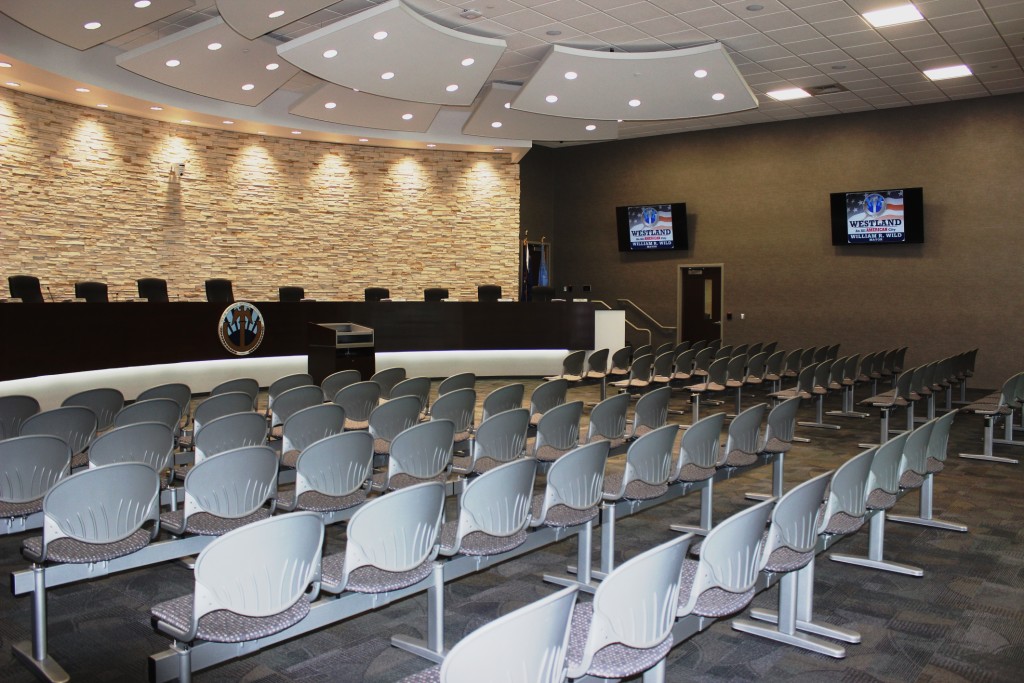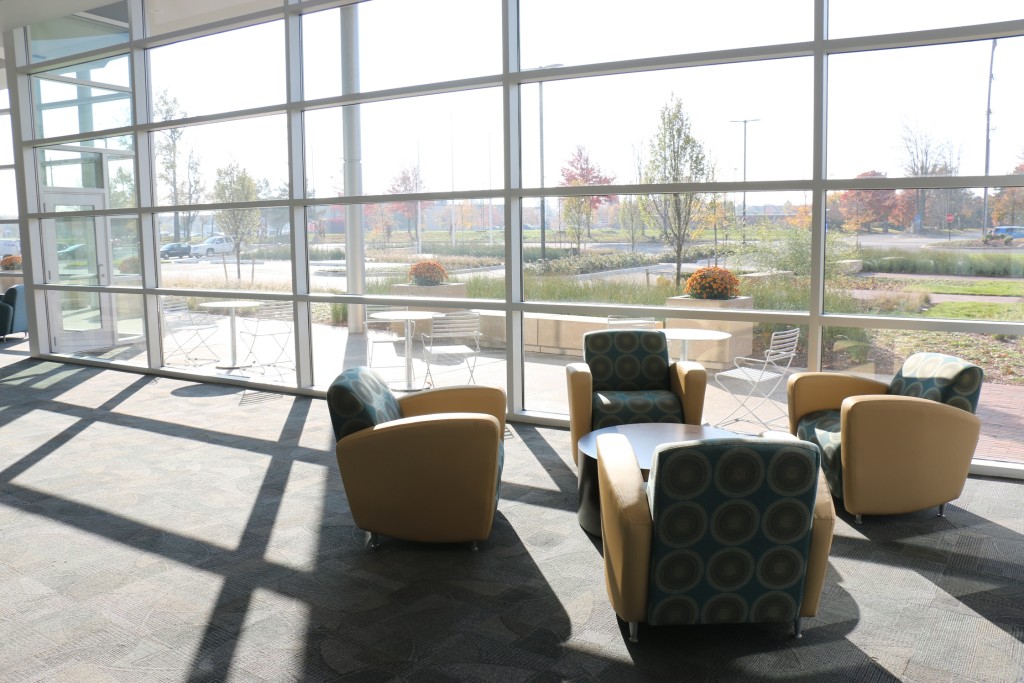Community: City of Westland, Michigan
Population: 10,000+
 Today, the hulking shell of a vacant big box is enjoying an unlikely second act in Westland. When the retailer left the space empty for nearly a decade, the building might have been destined to fall into disrepair. But rather than let the facility become a long-term eyesore, the city scooped it up and spent $10.1 million, using tax revenues generated by the city’s Tax Increment Finance Authority (TIFA), to transform the drab structure into a 64,000 square-foot City Hall.
Today, the hulking shell of a vacant big box is enjoying an unlikely second act in Westland. When the retailer left the space empty for nearly a decade, the building might have been destined to fall into disrepair. But rather than let the facility become a long-term eyesore, the city scooped it up and spent $10.1 million, using tax revenues generated by the city’s Tax Increment Finance Authority (TIFA), to transform the drab structure into a 64,000 square-foot City Hall.
The retro-fit is a modern, energy-efficient facility that captures the contemporary, environmentally sustainable city hall styles of today. The new facility houses a state-of–the-art banquet facility, and has become a one-stop shop for residents and businesses to conduct all of their business under one roof. The new location is also giving a much needed economic boost to the city’s shop and dine district, enticing private investors into this emergent sector.
Replicability:
Municipalities are often left with retail eyesores in this feeble real estate market. Re-purposing vacant and underutilized buildings can be an important economic development tool for the entire community. Westland looked at a number of options and found that retrofitting an existing building was the right decision for two reasons. One, to build a brand new 36,000 square-foot city hall to replace the existing structure would have cost upwards of $15 million, versus retrofitting a vacant structure that would offer them 64,000 square feet in one of their taxing jurisdictions for $10 million. And two, because the building was in their Tax Increment Finance District, the city did not have to ask taxpayers for additional money. Cost efficiency was always a key factor, as it usually is. It is generally cheaper to renovate than to build from the ground up, as shown with this project.
It is also important to highlight that the building’s owner was motivated to sell, having purchased the big box as a failed investment opportunity years prior. The previous owner also owns other buildings in the district and realized the incredible economic impact that the new city hall would have on the entire area.
The City held several community visioning sessions to introduce the concept to the public and residents found that the retrofit was a much more attractive option because they were not going to have to pay for it and it addressed the lingering issue of a decade long vacant property finally being re-purposed. Community buy-in by far, was the single most important factor in the success of this project.
To keep the project on time, on schedule and more importantly on budget, the City also created a “City Hall Advisory Committee” made up of the Mayor, Deputy Mayor, City Council President, Planning Director, Economic Development Director and the TIFA Chair.
Creativity and Originality:
There are two viewpoints when looking at a vacant property: Those who look at it as littering the city landscape and see senseless blight — and those who see an opportunity to create something new.
Big box stores, although abandoned by big retailers, can boast positive fundamentals and are ideal targets for value-ad and adaptive re-use strategies.
In Westland’s case, the empty big box store was a blank canvas. The city found that this opportunity could be adapted into a usable space and a much better alternative than simply razing it or spending millions more on a brand new facility.
The renovation on this building has barely left a trace of the original use. In fact, the actual shell of the structure is all that is left of the old Circuit City. Windows, doors, walls, ceilings, and the entire exterior have all been completely overhauled. Additionally, no design could be more environmentally conscious than adaptively reusing a former “big box” retail store, saving approximately 64,000 square feet of building demolition debris from being sent to the landfill.
Floor to ceiling, indoors and out, the city hall architectural features have become a blue print for energy efficiency. For example, cinder block walls were knocked out and replaced with energy efficient windows to provide more natural light; when meeting rooms and offices are not in use for a period of time, the lights power off; the carpeting throughout the building was installed as replaceable squares; and finally, the city took a holistic approach to the landscaping, installing low maintenance foliage that requires little water to survive.
Whether it is a city hall, public safety building, court house, or a recreation facility, this project can easily be replicated and used as a blueprint for others who are searching for a plan to re-use or retro-fit an existing facility.
Community Impact:
The new location has produced significant service improvements for residents and customers with all essential city departments now located at one location, and streamlined one-stop shopping counter services.
The New City Hall is also located in the heart of the “shop and dine” district, and has become a catalyst for future development in this emerging downtown core. After many years of new construction and renovation projects at a standstill, the logjam has finally been broken. This development is helping to stimulate private investment that has the potential to generate hundreds of thousands in new tax revenue to the city through new development opportunities and interest.
Additionally, numerous business owners are in the process or have already made new investments into their existing businesses. Whether making façade improvements or expanding their facilities, the growth is happening at an exponential rate and shows no signs of slowing.
 Today, the hulking shell of a vacant big box is enjoying an unlikely second act in Westland. When the retailer left the space empty for nearly a decade, the building might have been destined to fall into disrepair. But rather than let the facility become a long-term eyesore, the city scooped it up and spent $10.1 million, using tax revenues generated by the city’s Tax Increment Finance Authority (TIFA), to transform the drab structure into a 64,000 square-foot City Hall.
Today, the hulking shell of a vacant big box is enjoying an unlikely second act in Westland. When the retailer left the space empty for nearly a decade, the building might have been destined to fall into disrepair. But rather than let the facility become a long-term eyesore, the city scooped it up and spent $10.1 million, using tax revenues generated by the city’s Tax Increment Finance Authority (TIFA), to transform the drab structure into a 64,000 square-foot City Hall.


